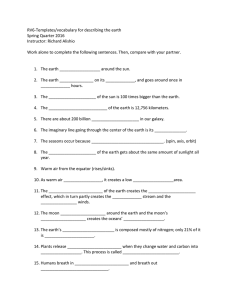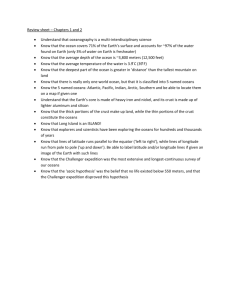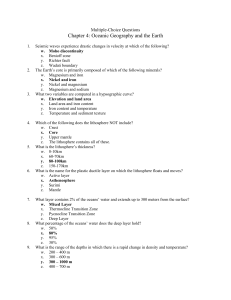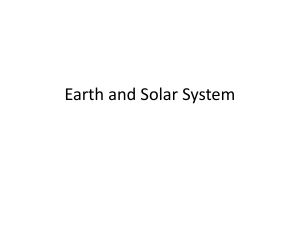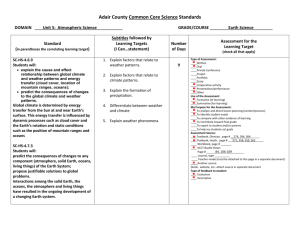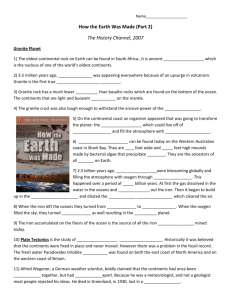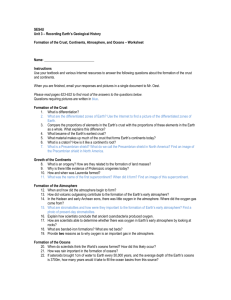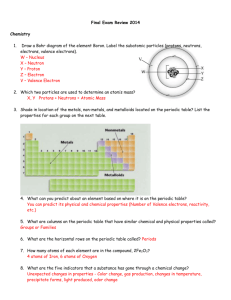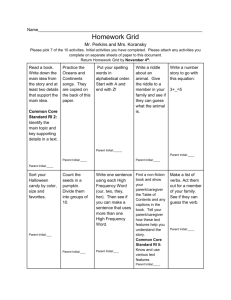Review guide
advertisement
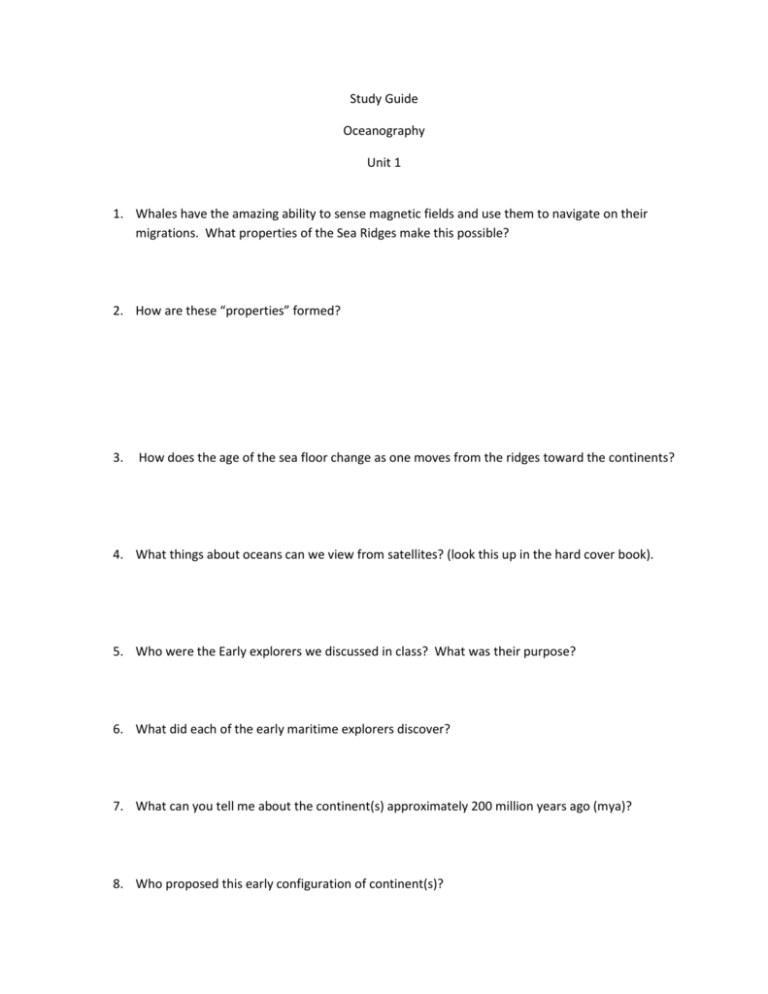
Study Guide Oceanography Unit 1 1. Whales have the amazing ability to sense magnetic fields and use them to navigate on their migrations. What properties of the Sea Ridges make this possible? 2. How are these “properties” formed? 3. How does the age of the sea floor change as one moves from the ridges toward the continents? 4. What things about oceans can we view from satellites? (look this up in the hard cover book). 5. Who were the Early explorers we discussed in class? What was their purpose? 6. What did each of the early maritime explorers discover? 7. What can you tell me about the continent(s) approximately 200 million years ago (mya)? 8. Who proposed this early configuration of continent(s)? 9. What is the primary evidence for the current theory of the genesis of the universe? 10. What caused the earth to become “stratified”? 11. What are clasts and what do they tell us about rocks? 12. What is the general composition of the oceanic crust? 13. What is the general composition of the continental crust? 14. In regards to Sedimentary rock, how does depth relate to age? 15. How can one date rocks? Give me 2 examples and explain how they differ. 16. Know the layer’s of the earth as defined by Physical Properties. 17. Know the layer’s of the earth as defined by Chemical composition. 18. What was the composition of earth’s VERY FIRST atmosphere? (you might want to ask me about this one). 19. What property of the earth allowed for liquid H2O oceans to form? When did they originally form? 20. Know the facts I provided regarding each of our oceans (eg. The Pacific is the largest of the oceans ……..etc. etc.) 21. Compare and contrast the Oceanic Crust and the Continental crust. 22. Study your WOTDs. 23. So basically all you need to know is everything about the oceans, earth, solar system and universe from the beginning of time until now. No worries. ;-) 24. What is the center of the Earth Moon system called, and what causes it? 25. What is the force that holds an orbiting object to the center of the orbit (gravity is the example in the Earth Moon system)? 26. What are the terms describing when the moon is directly overhead, and when it is directly overhead on the opposite side of the planet from a given location. 27. What is the difference between and Neap and Spring tide? What causes them? 28. What is a tidal range, and when is it greatest? 29. What is a Diurnal Tide, and where on the US coast might you find one? 30. What is a Semidiurnal Tide, and where on the US coast might you find one? 31. What is a Mixed-tide, and where on the US coast might you find one?
